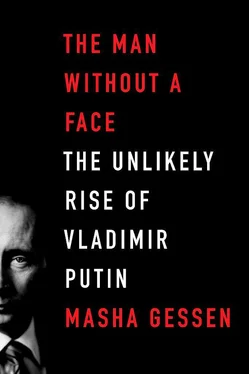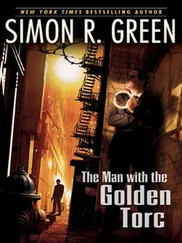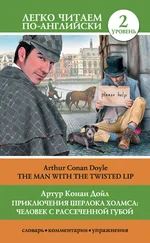Nor did Baikalfinansgrup have financial assets. According to its registration documents, filed two weeks before the auction, its capitalization was ten thousand rubles, or roughly $300. But somehow the state-owned oil company Rosneft—the one whose president had declined to respond to Khodorkovsky’s questions about perceived corruption a year earlier—lent the unheard-of company more than $9 billion to buy Yuganskneftegaz; this was less than half the company’s estimated worth at the time. The auction, held on December 19, 2004, lasted all of two minutes.
Speaking in Germany two days after the auction, Putin bristled at the suggestion that Yukos assets had been bought by an unknown entity. “I know the stockholders of the company, and they are individuals,” he said. “They are individuals who have been working in the energy sector for a long time.” Another two days later, Rosneft, the state oil company, bought Baikalfinansgrup, taking control of the Yukos assets—but also ensuring that it could never be sued for having purchased it in the course of a rigged auction.
It had been just over a year since Khodorkovsky’s arrest, and it was now clear Russia had passed two milestones. With the country’s former richest man behind bars indefinitely, no one, not even the rich and powerful, could afford free agency. And with the assets of the country’s largest private company hijacked in broad daylight, Putin had claimed his place as the godfather of a mafia clan ruling the country. Like all mafia bosses, he barely distinguished between his personal property, the property of his clan, and the property of those beholden to his clan. Like all mafia bosses, he amassed wealth by outright robberies, as with Yukos, by collecting so-called dues and by placing his cronies wherever there was money or assets to be siphoned off. By the end of 2007, at least one Russian political expert—someone believed to have access to the Kremlin—estimated Putin’s personal net worth at $40 billion.
THE $40 BILLION FIGURE can be neither confirmed nor disproved, but there was one story I was able to report in detail. It shed light not only on the scale of Putin’s personal fortune but also on the mechanics of amassing it. It took my good reportorial luck and one very brave man to tell it.
In the early 1990s, Sergei Kolesnikov had been one of hundreds of Soviet scientists turned Russian entrepreneurs. A Ph.D. in biophysics, he started out manufacturing medical equipment and then began importing it. During the Sobchak administration, he formed a joint venture with the city and created a successful business outfitting St. Petersburg’s clinics and hospitals. After Sobchak was voted out of office, he bought out the city’s share and took the company private, staying in the same line of business.
As soon as Putin was elected president, Kolesnikov was contacted by an old business associate from his St. Petersburg days. He outlined a scheme: some of Russia’s wealthiest men would donate significant sums of money earmarked toward purchasing medical equipment for Russian facilities. Kolesnikov would use his expertise to procure the equipment at significant volume discounts. The difference between the list price of equipment, which would be reported to the donor, and actual money spent had to be no less than 35 percent; if Kolesnikov obtained an even greater discount, he could keep the difference as profit. The 35 percent had to be deposited in a bank account set up in Western Europe and would later be used to invest in the Russian economy.
Kolesnikov had no qualms about agreeing to the scheme. Like Browder, he thought he was living well while doing good for Russia: the much-needed medical equipment was an unquestionable good; on top of that, his new partners would be investing large amounts of money into the Russian economy. Sure, they were skimming off the top—more than a third of the money donated—but they were investing it in Russia, not lining their own pockets. And also, “we knew this was not money made by backbreaking labor. You can’t come by that kind of money honestly.”
The first donor was Roman Abramovich, a secretive Russian oligarch, and future owner of the Chelsea Football Club. He donated $203 million, of which about $140 million bought equipment for the Military Medical Academy in St. Petersburg (run by Putin’s friend the minister of health, who had once helped ferry Sobchak out of the prosecutor’s office and out of Russia) and over $60 million stayed in a European bank account. His donation was followed by a number of smaller ones. By 2005, about $200 million had accumulated in this bank account. Kolesnikov and his two partners—one had started out with him in St. Petersburg and the other had brought him into this new line of business—formed a new company called Rosinvest, a wholly owned subsidiary of a Swiss company, which did business through a third company, also Swiss, ownership of which was fixed in bearer shares. In other words, whoever was in physical possession of the papers was the legal owner. Each of the three men got 2 percent of the shares; the remaining 94 percent was handed over to Putin himself.
The newly formed company had sixteen different investment projects, mostly in industrial production; they were well chosen, naturally afforded a variety of tax and legal benefits, and brought a handsome profit—94 percent of which belonged to Putin. All along, there was also what Kolesnikov thought of as a small personal project of Putin’s, a house on the Black Sea budgeted at $16 million. “But things kept getting added,” Kolesnikov told me. “An elevator to the beach, a marina, a separate high-voltage line, a separate gas pipeline, three new motorways that led directly to the palace, and three helicopter pads. The building itself was changing, too: an amphitheater was added, then a winter theater. And then it all had to be decorated too: furniture, artwork, silverware. It’s all very expensive!” Kolesnikov traveled to the Black Sea coast twice a year to monitor the project; last time he was there, in the spring of 2009, what had been a house had become twenty buildings, and the total budget had long since passed the billion-dollar mark.
Something else had happened a few months earlier. In the aftermath of the world financial crisis, Kolesnikov’s partner informed him that Rosinvest would no longer be making investments: its only purpose now was the completion of the Black Sea palace. Kolesnikov, who had not exactly been a stickler for legalities but had been very proud of his work and sincerely convinced that he was creating wealth for his country, was deeply offended. He fled Russia, taking the company’s documentation with him, and paid a Washington law firm a considerable sum of money to review the papers and verify his story. And then he went public with the story of what became known as Putin’s Palace. But the story, while it attracted a fair amount of attention when I wrote about it in Russia, drew little reaction from the government: first Putin’s press secretary dismissed it as rubbish and then, when copies of some building contracts were published by Nevaya Gazeta , the Kremlin confirmed that the Black Sea project existed.
IT WOULD BE fair to assume that the palace scheme was just one of many similar schemes for squeezing wealth out of Russia. The question is: What is the nature, the motivating principle, behind these schemes? In other words, the question is, once again: Who is Mr. Putin?
There is the story of Putin the bureaucrat who did not take bribes—a key narrative that explains Boris Berezovsky’s attraction to him, which, in turn, was key to making Putin president. Berezovsky’s right-hand man, Yuli Dubov, who had long since become one of the London exiles, told me one of the most striking of the upstanding-Putin stories. Once, in the early 1990s, Dubov was having trouble with some of the documentation for the car service station Berezovsky was opening in St. Petersburg. He needed Putin to make a phone call to facilitate the process, and to this end he scheduled lunch with him. Dubov arrived at city hall early, as, uncharacteristically, did Putin. As they both waited for their appointed time to be able to leave for lunch, Dubov broached the subject of the phone call. Putin immediately took care of the matter, but then refused to go to lunch: “Either you have me help you with your business, or you take me to lunch,” Dubov remembered him saying. This was clearly not just a bureaucrat who did not take bribes: this was a bureaucrat whose entire identity rested on his incorruptibility.
Читать дальше












